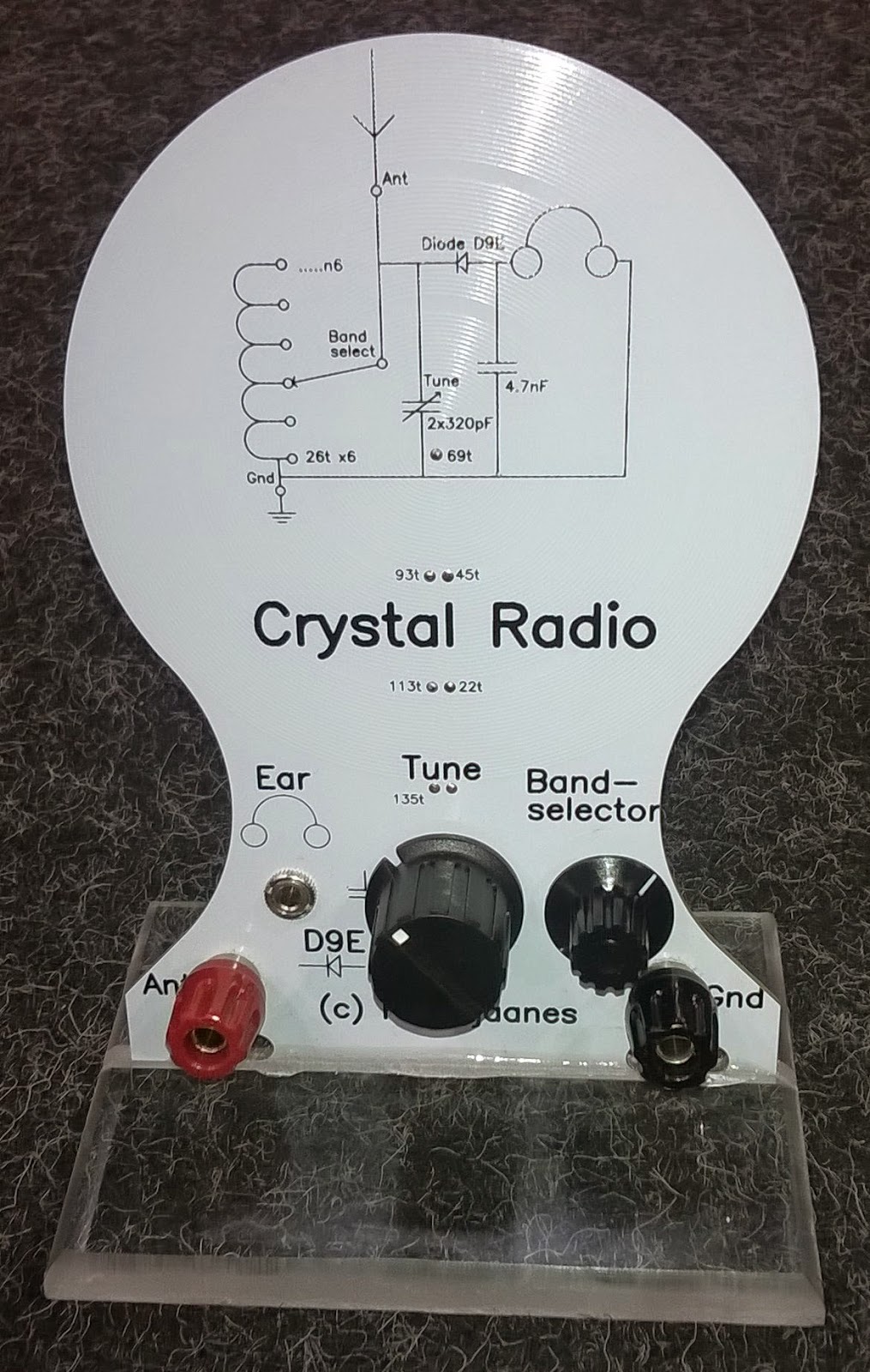Posts Tagged ‘AM’
 Fredbox – 2m transceiver
Fredbox – 2m transceiver
Many years ago I designed and made the 2m AM Fredbox 2m AM transceiver. At the time it was the smallest 2m transceiver I’d ever seen or used. Several close copies were made. It worked some impressive DX including several 60 mile handheld contacts and one over 100 miles to Brittany from the South Devon coast. All these were with whip antennas on the rig and not beams. Most QSOs were with locals. The power was only 10mW AM. It was ideal for contacts around Cambridge where I lived at that time.
Some years ago, I rebuilt the transceiver and had some decent QSOs yet again.
As with the Sixbox, I would suggest the design is taken as a springboard for your own version. It is certainly ripe for further development.
 Sixbox QRP rig for 6m
Sixbox QRP rig for 6m
 |
| Sixbox 6m AM rig – a simple design |
Several years ago I designed and built a derivative of my 2m Fredbox but for 6m AM. The same basic design would easily translate to a 10m version. Both bands could be useful for cross-town natters, especially when both 10m and 6m behave like VHF bands, which is in the quieter sun years and at night on 10m. The Sixbox is simple and certainly capable of further development.
Treat the design as a starting point. A 10m version of the RX has copied transatlantic USA AM stations well, but this is NOT a rig for DX use. It is better suited to cross-town/inter-village natters.
 A beauty of a crystal radio
A beauty of a crystal radio
This past weekend during Hammeeting – the largest Ham rally in Norway – I met Per LA9DTA.
He showed me his beautiful crystal radio. It can be seen in the center of the table, with some close-ups below. The design has a printed coil and the whole design is made on a PCB which was shaped as shown in the image. It has a bandswitch and a Ge diode.
I fell for his design, but with the lack of longwave and medium wave transmitters here I am not sure if I would have much use for it. That is unless I set up one of my transmitter projects to support a radio like this.
 A beauty of a crystal radio
A beauty of a crystal radio
This past weekend during Hammeeting – the largest Ham rally in Norway – I met Per LA9DTA.
He showed me his beautiful crystal radio. It can be seen in the center of the table, with some close-ups below. The design has a printed coil and the whole design is made on a PCB which was shaped as shown in the image. It has a bandswitch and a Soviet low forward voltage Ge diode.
I fell for his design, but with the lack of longwave and medium wave transmitters here I am not sure if I would have much use for it. That is unless I set up one of my transmitter projects to support a radio like this.
 AM on 28MHz and up
AM on 28MHz and up
Much to my surprise, the RSGB actually published my recent letter to their “The Last Word” column in RadCom, together with a (pathetic) reply from their Spectrum Chair. At least my letter was printed.
The response did nothing to address my concerns. Although the RSGB claims not to be anti-AM, you’d find this hard to believe with a look at the most recent band plans. AM has its place on all bands from 28MHz upwards. I just wish the RSGB and other national organisations would simply acknowledge that this mode has its place. It may be a minority interest mode, but in my experience it is the simplest mode from a building viewpoint.
 VHF AM and the RSGB
VHF AM and the RSGB
Recently, I wrote to the “Last Words” column in Radcom. I very much doubt my letter will be published. The main thrust of the letter is the (very negative) attitude of the RSGB to the AM mode.
My letter (as sent) is reproduced here. I’d be interested to hear your views.
At the present time G6ALB is experimenting with very low cost 70cms AM modules as the heart of a possible short range (3km) voice transceiver. We have had some success already.
“Thank you for publishing the latest Band Plans in the February 2015 RadCom. Although because of my poor voice (stroke) I tend to use digital techniques, I still enjoy the occasional outing using AM. Like many, I have worked transatlantic AMers on 29-29.1MHz with real QRP and simple antennas.
Yet again, one could be forgiven for thinking AM, especially 28MHz and up, is a dirty word at the RSGB. AM gets no mention on 28MHz and 50MHz and gets a (begrudging?) comment as a footnote only in the 144MHz Band Plan when other modes get “centres of activity” mentions. For the avoidance of any doubt, AM is alive and well in the 29-29.1MHz sub-band. AM on the 144MHz (2m) band can be found on and around 144.550MHz. There has been AM on 29-29.1MHz for years and years and years! Yes, this is the all-mode section, but why not say this is the 28MHz (10m) AM sub-band? Also, why are 144MHz AM users asked to “consider adjacent channel activity”? AM should easily fit in 6kHz!!
Sorry, yet again, AM is being treated as a dirty and outdated mode. May I remind readers that ex-PMR AM rigs ripe for use on VHF can be picked up for virtually nothing and that there is room for AM on all bands from 28MHz upwards. AM has its enthusiasts on other bands too, but yet again the RSGB seems hell bent on killing off this mode. Why?
73s
Roger Lapthorn G3XBM”
 Digital repeaters
Digital repeaters
As I have mentioned before, I am a rare repeater user, partly because my voice is so poor currently and I don’t find operating through repeaters that satisfying. Each to his/her own and if this helps you enjoy the hobby go ahead!
At the moment it is far from clear which form of digital repeater will win: there are several competing digital standards and all have their advocates. For now I shall sit back and wait. A bit like the video standards war in the 1980s, the best system may not win. Let’s see. Up to now I have only used FM repeaters.
When I do use voice I use SSB, FM and AM. All modes have their places on our bands. SSB is good on the crowded HF bands, FM useful for nets on VHF, and AM rigs simple to build and there is space on all bands from 10m upwards for all analogue voice modes. A well designed AM rig should occupy less than 6kHz, far less most FM transmissions on our bands. 10m AM, just above 29MHz, is a great mode. I have worked quite a few stateside stations on 10m AM. And I have only used QRP AM. Let no-one tell you AM is a dead mode!














